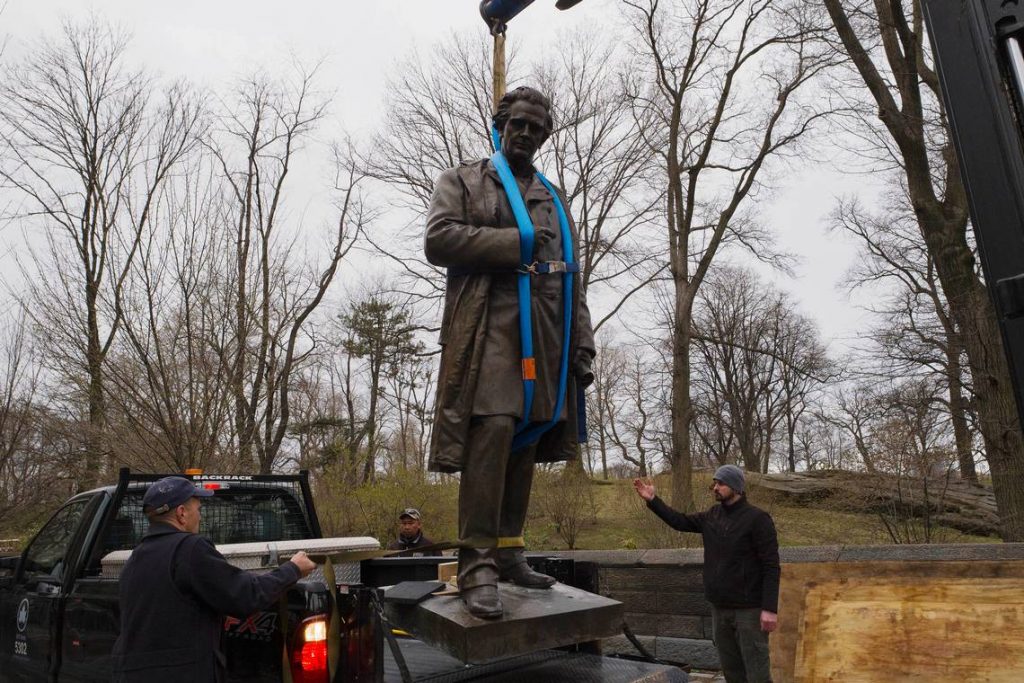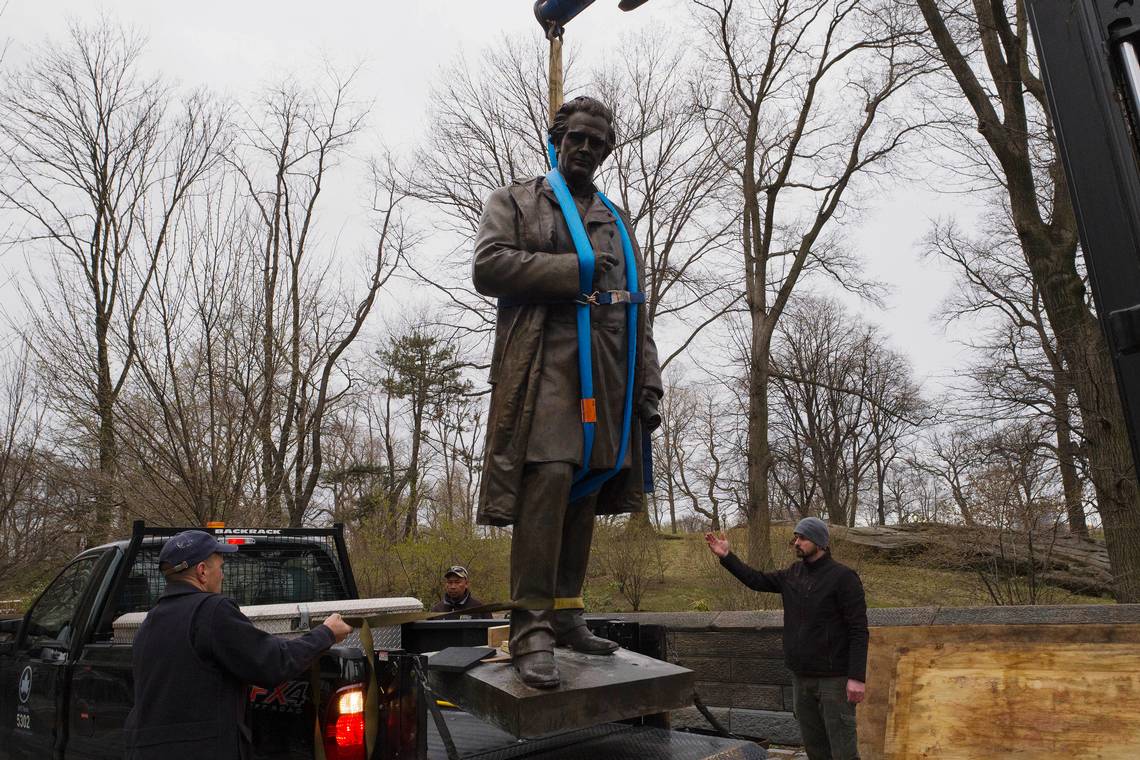SOUTH CAROLINA — Statue of Civil War-Era Medical Innovator Removed in NY, Remains in SC
A statue of a South Carolina native known as “the father of gynecology” was removed from Central Park in New York on Tuesday.
The legacy of Dr. J. Marion Sims — a 19th-century gynecologist who experimented on enslaved women — is so controversial that his monument was the only one of more than 800 under review that was removed from its current location in New York, npr.org reported.

The statue of Dr. J. Marion Sims is removed by crane on Tuesday, April 17, 2018, in New York’s Central Park. Sims was known as the father of modern gynecology, but critics say his use of female slaves as experimental subjects was unethical. The statue is being moved to Green-Wood Cemetery in Brooklyn, where Sims is buried.
Mark Lennihan AP
In the Antebellum era, Sims performed surgical experiments on slaves without using anesthesia, according to newyork.cbslocal.com. These experiments led to a breakthrough technique that fixed vesicovaginal fistula, or tears between the vagina and bladder.
Statues of Sims remain standing elsewhere in the country: In addition to one in Montgomery, Ala., where he performed much of his medical work, there is a monument to Sims in Columbia.
While Sims’ statue was removed from New York’s Central Park, it is not moving out of public sight — unlike many Confederate monuments that have been removed since the summer of 2017.
New York City’s Public Design Commission on monuments and markers unanimously agreed to relocate Sims’ statue to Green-Wood Cemetery in Brooklyn, where Sims is buried, postandcourier.com reported.
With the input of New York Mayor Bill De Blasio, the commission had debated moving or removing hundreds of memorials — including one of Christopher Columbus and another of a World War I hero-turned-Nazi collaborator, according to newyork.cbslocal.com.
A new plaque will be added both to the empty pedestal in Central Park and to the relocated statue, npr.org reported, and new artwork has been commissioned to reflect Sims’ controversial legacy. The original plaque on the statue memorialized Sims for his “brilliant achievement.”
The 14-foot-tall statue, which was installed in 1934, was physically removed from its home by NYC Parks Department workers, who used a crane to lift it off its pedestal before placing it in the back of a truck, where it was wrapped in a blanket, according to nydailynews.com.
Sims was born near Rock Hill in 1813, went to college in Columbia and studied medicine in Charleston, postandcourier.com reported.
In addition to founding New York’s first women’s hospital and innovating surgical techniques and instruments like the speculum, Sims’ greatest accomplishment might have been finding a cure for vesicovaginal fistula in the 1840s, according to Time magazine.
The procedure fixes a tear between the vagina and bladder. But it is how he achieved this breakthrough procedure that clouds Sims’ legacy.
“These women were property,” Vanessa Northington Gamble, a physician and medical historian at George Washington University, told NPR. “These women could not consent. These women also had value to the slaveholders for production and reproduction — how much work they could do in the field, how many enslaved children they could produce. And by having these fistulas, they could not continue with childbirth and also have difficulty working.”
Time magazine called Sims’ medical experiments “unethical.”
“This individual is considered the father of gynecology, but he practiced and basically tortured enslaved women,” former New York City Council Speaker Melissa Mark-Viverito told nydailynews.com.
Sims is honored elsewhere in Columbia: The S.C. Department of Health and Environmental Control building is named in Sims’ honor, as is a building on the campus of the University of South Carolina.
Sims’ monument in Columbia is on the grounds of the S.C. State House, near the corner of Assembly and Gervais streets.
In the past, protesters have demanded removal of the monument. In 2017, Columbia Mayor Steve Benjamin said he is more offended by the statue of Sims on the Capitol grounds than any Confederate memorial.
But it likely isn’t going anywhere, regardless of public pressure or the statue’s removal in New York. That’s because South Carolina’s Heritage Act makes it very difficult to remove Confederate monuments, which has been done across the country since the deadly violence at the white nationalist rally in Charlottesville, Va.
The 18-year-old Heritage Act paved the way for the Confederate flag to come off the S.C. State House dome in 2000. But it also required all other public historical markers to stay in place, unless two-thirds super-majority vote of the Legislature approves the action. The monument to Sims near the State House could stay in place for a long time.
–thestate.com
###



